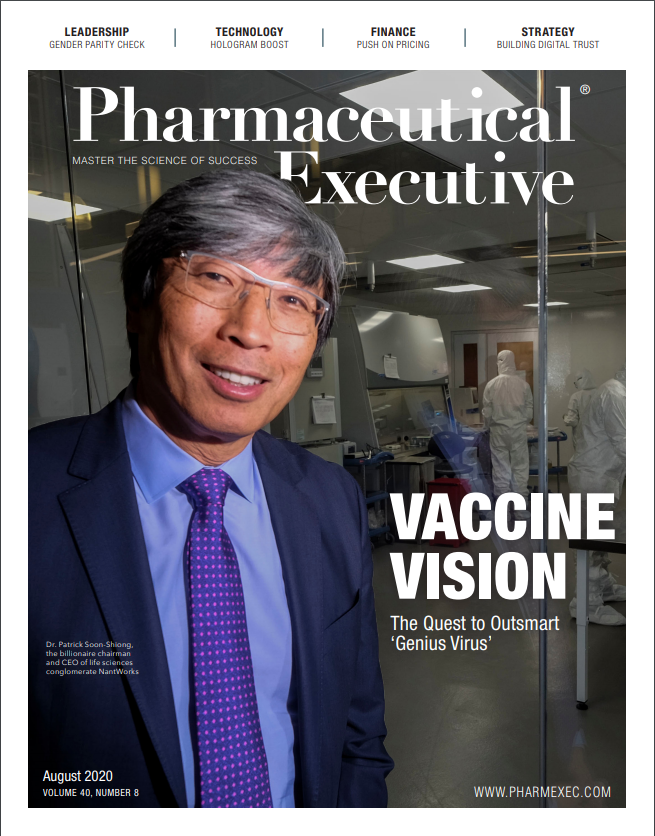- Sustainability
- DE&I
- Pandemic
- Finance
- Legal
- Technology
- Regulatory
- Global
- Pricing
- Strategy
- R&D/Clinical Trials
- Opinion
- Executive Roundtable
- Sales & Marketing
- Executive Profiles
- Leadership
- Market Access
- Patient Engagement
- Supply Chain
- Industry Trends
Holograms as Industry Tool Here to Stay
Their application for security and anti-counterfeiting purposes continues to evolve, especially in combination with digital technology.

Glaxo first used tamper-evident holograms to seal packs of Zantac in 1989. Since then, holograms have become a staple measure in the pharma industry, commonly used to upgrade products and raise their security levels. As well as being integrated in tamper-evident seals, holograms protect blister packs and can be transferred directly onto pills and capsules. Various types of technologies allow manufacturers to select, customize, and adjust the appropriate security level, combining the visual effect of a hologram with integrated overt and covert security elements.
Julian Upton

While it has now been a practice for over 30 years, like other technologies, the application of holograms in pharma continues to evolve.
“Today, we are seeing advances in application, film coating, and manufacturing technology… [A] new generation of advanced holograms [is] facilitating fresh levels of visual effects, brand enhancement, regulatory compliance, and anti-counterfeiting,” wrote Paul Dunn, chairman of the International Hologram Manufacturers Association, earlier this year.1
One example is the covert-hologram seal. Explains Liliane Pfeiffer, product manager, Tamper-Evident Solutions at Schreiner MediPharm, this security seal, initially highly transparent and inconspicuous, only becomes visible when it is opened for the first time. The effect of opening it is irreversible; the seal’s transparent original condition cannot be restored. Such semi-covert or covert hologram features make the counterfeiter´s life more difficult, says Pfeiffer.
“The overt level is accessible to any stakeholder across the supply chain, down to the end user,” she told Pharm Exec. “But to verify the covert elements of a security hologram, one would need detailed information about these elements, as well as additional detection techniques. This makes it harder to copy the security hologram.”
However, says Pfeiffer, it is recommended to combine a hologram with additional covert and forensic security features to create complex, multi-level security labels. Indeed, adds Luděk Šilhánek, business development manager at the Czech Republic-based IQ Structures, no technological advantage can be relied upon to work forever. That’s why “it is critical to innovate continuously,” says Šilhánek.
One might suspect that, in the face of digital security and supply chain measures such as blockchain, smart packaging, and serialized data, the humble hologram may one day be threatened with replacement. But, as Dunn writes, “the ability of the hologram to provide effective protection lies in its…integration with other technologies.”
Hologram technology can be integrated with secure web interfaces to fully track and document a product’s movements throughout the supply chain, for example. Smart labels “can combine anti-counterfeit holographic and other technologies, such as near-field communication, with mobile authentication within a single product.”
Dunn points to a development in the area of track-and-trace holography from the US company Holoptica. The company offers a hologram label with a QR code (holoQR) designed to operate in tandem with its or the customer’s own validation software. Any item marked with the holoQR can be scanned with a smartphone and instantly verified as an original.
Marrying digital security measures to the application of holography, says Šilhánek, has become critical. Combinations of holograms with track-and-trace solutions “now ensure that a product can be followed across the entire supply chain with a higher level of certainty than ever before.” He adds: “Digital protection is more important for centralized oversight; visual protection enables users to identify genuine drugs immediately. Codes and other elements of digital protection should be protected with holograms. The combination of these two technologies creates a very strong defense and will not change anytime soon.”
Reference
- Paul Dunn, “How holography fights brand piracy in healthcare packaging today,” Packaging Digest, Jan. 29, 2020.
Julian Upton is Pharm Exec’s European and Online Editor. He can be reached at jupton@mjhlifesciences.com.

The Impact of Artificial Intelligence on the Creation of Medicines
October 24th 2024Najat Khan, chief R&D officer, chief commercial officer, Recursion, and Fred Hassan, director, Warburg Pincus, discuss how artificial intelligence can help reduce healthcare costs at the 20th Annual Young & Partners Pharmaceutical Executive Summit held at the Yale Club of New York.
Plan Ahead: Mastering Your AI Budget for 2025 Success
October 9th 2024Generative AI is just one part of the artificial intelligence and machine learning that is being used by life science organizations, emerging as a major area of interest and an area in which costs and ROI are still largely unknown.
